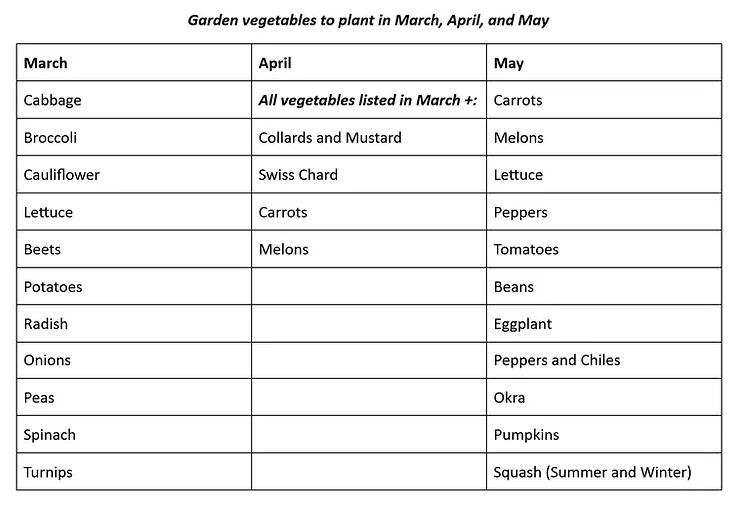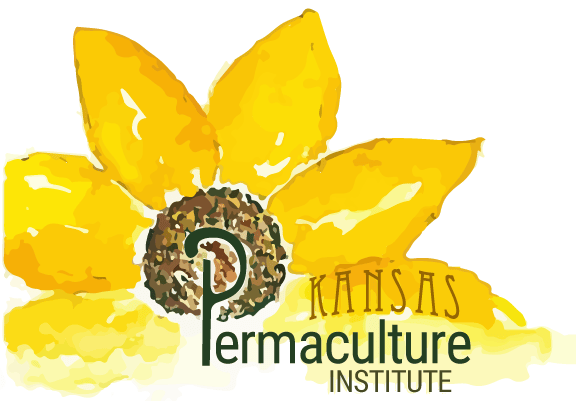Living with The Seasons
Living With the Seasons and Turning Problems into Solutions: Spring Edition
By Stephanie Lambert
What to do (and not to do) right now in your permaculture garden
The arrival of spring with some warmer days has me itching to get outside and start working in the garden. It is tempting to start clearing away the remains of last season and start putting in new plants. It is true that there are a few things we can plant right now with good success. When I was young, our family tradition was to get together around St. Patrick’s Day to plant an acre of seed potatoes, peas, spinach, radishes, and onion starts. What I’ve observed on my little farm in the last few years is that my soil is generally too wet to work on St. Patrick’s Day and that I need to wait a couple of weeks to find conditions favorable to working the soil for planting potatoes and onions. Even with waiting a bit longer, most years I will make the mistake of planting too early and lose a few choice plants because I thought the cold, wintery weather was finally over.
Realistically, we are several weeks away from consistently warm air and soil temperatures. When planning your garden and getting the timing right, it is important to know when to expect that last spring frost. Your seed packets will often base planting recommendations around this key date. Even if we don’t get more ice and snow, the soil is still too cold for many plants to thrive in my Zone 6b climate in the northeast portion of the state. Depending on where in Kansas you are, K-State’s data suggests your final spring frost might occur sometime between April 5 and May 8.
If you don’t know when to expect your last frost each spring and first frost each fall where you are, there are a variety of resources available to guide you. K-State’s Department of Agronomy publishes maps with the average timeframes associated with the spring frost, fall freeze, and length of the growing season across the state at https://climate.k-state.edu/maps/special/freeze. In addition, there are many websites that offer more detailed information you can look up by zip code, including the probability of frost after a given date in your region. One website I referenced recently is https://davesgarden.com/guides/freeze-frost-dates/#b. I prefer to select the date for which there is a 10% or less risk of frost, to guide my planting decisions for my outdoor planting beds. For my area, that date isn’t until April 30. I choose a later date than some since my little farm is in a low-lying valley and it tends to be cooler here on spring nights than at neighboring properties on higher ground.
Even after the last frost, it is important to keep in mind that some plants, including tomatoes, chiles, eggplants, sweet potatoes, and okra do best in warm soil. If the soil is too cool or wet, they will not thrive. Depending on the late spring weather conditions, these plants may do better if you put them out in late May or even early June.
If it isn’t time to plant most crops yet, you might be asking yourself what you can do to scratch that gardening itch right now. There are many things we can do now to set ourselves up for a fruitful season. The most important thing you can do now and throughout the growing season is to observe your specific landscape and do some planning to address past problems. Some specific questions to consider as you observe and plan are provided below.
Where is there bare ground and mud?
When the ground is bare, it is at risk for erosion and open for weedy growth. Cold air draws out all the moisture from your topsoil and erosion will blow away or wash away your nutrients. In addition to preparing beds now for planting later, it is an ideal time to tend to any bare soil you find in your landscape. Add manure or compost and mulch, mulch, mulch!!! Another good option is to incorporate living mulch through cool-season cover crops, such as spring oats, clovers, field peas, and hairy vetch. You can purchase commercial seed mixes or select a single species, depending on your goals. These cover crops will grow in cooler weather and can be incorporated into the soil to add organic matter when it’s time to put in warmer season plantings. In some cases, you can transplant into a lower-growing living mulch and keep it in place throughout the entire growing season.
What areas are sunny and shady right now and how do I expect that to change as the foliage fills out in the landscape and the angle of the sun changes?
Where I live, the trees are just beginning to bud and the canopy hasn’t filled out completely. If you only think about where the sun and shade are now without accounting for how the shade from trees and changing angle of the sun will affect the landscape, it is likely you will plant something that needs full sun to flourish where it will spend much of the season languishing in the shade. When you anticipate where the shade will be during the hottest part of the season, you can use that information to extend the flowering season for your heat-sensitive flowers and the harvest window for tender leafy green crops. Another resource to help with this is available here https://www.suncalc.org/#/40.1789,-3.5156,3/2021.03.21/12:53/1/3.
When it rains, where does water pool, and how does it move across the landscape?
One key goal in most permaculture systems is to capture water during the wet times and so our plants can succeed with less work during the drier times. The more spring rain we can capture and hold, the less we need to irrigate later in the season when our climate tends to be drier. There are a lot of different ways we can approach capturing water, including the use of thick mulch to minimize evaporation from the soil, digging swales on the land’s contours to capture water that falls quickly slowing it down, and allowing it to filter into the soil more slowly, and water catchment in rain barrels and cisterns.
What types of perennial plants do I want to add this season?
Perennial plants take more time to establish, bear fruit, and reach their full potential in our landscapes. Many of these plants are most successful when we plant them in spring when temperatures are cooler and the soil holds more moisture. Bareroot trees and shrubs, which are in their dormant state, can be planted now. With adequate mulch, these plants are likely to develop good root structures before the heat of summer and will be more likely to survive weather extremes. This is also a good time to start cuttings of berries and shrubs like elderberry and pruning established trees and shrubs before active growth begins.
When the soil warms up, what vegetable and flower seedlings do I intend to transplant?
Although it isn’t time to plant outside, it is time to plant your tomatoes, peppers, eggplant, and annual flowers such as cosmos, zinnias, and marigolds inside. If you plant these under lights or in a sunny windowsill, you will have baby plants just the right size to transplant in your garden when it is warm enough. An added bonus is you will have some greenery to lift your spirits when we get that late spring snow and ice that makes it feel like true spring will never arrive. The table below provides some ideas for vegetables to direct seed and transplant in March, April, and May. For more information about planting times for various vegetables in Kansas, check out https://bookstore.ksre.ksu.edu/pubs/mf315.pdf.

What pollinator partners do I rely on and what do they need right now?
The health and success of any garden relies on pollinator partners!!! Many of those tiny bees and wasps hibernate in the soil under the remains of last year’s growth. I try to leave some of these areas in place for just a couple more weeks to give these beneficial insects a safe haven. As tempting as it might be to control spring dandelions and other weeds that flower early, try to resist the temptation to spray. The bees rely on these flowers as a food source in early spring. Let those dandelions bloom!
What weeds gave me problems last year?
This is a good time to think about those plants in the landscape that you need to manage better. I am fairly tolerant of naturally occurring species in my lawn and fields and I see them as indicators of the health of my landscape. I prefer not to spray and instead use physical control strategies such as heat solarization, grazing, digging, and mowing to control the spread of plants I want to reduce in my landscape. However, there are twelve weed species categorized as noxious weeds by the state and must be controlled to avoid trouble with the neighbors and the county government, including musk thistle. I already see the thistles coming up in my field and they are much easier to dig out when they are small. Physical control is easiest when unwanted plants are small and immature. For more information on Kansas noxious weeds, check out https://agriculture.ks.gov/divisions-programs/plant-protect-weed-control/noxious-weed-control-program.
What garden pests gave me problems in the past and what can I do now to keep them out of the garden this year?
Some pests I’m planning for are rabbits, moles, voles, deer, squash bugs, and Japanese beetles. For the deer and rabbits, I need better fences around my planting beds. This is the best time of year for driving fence posts or using a post hole digger. While the ground is damp and soft, I can pound in t-posts with little effort. Spend a little time mending your fences, pre-ordering beneficial insects, and determining strategies to control those bugs that bug you in the garden. I will also use some boundary plantings known to deter them including lambs ear, yarrow, hyssop, bee balm, marigolds, geraniums, snapdragons, sweet alyssum.
Ultimately, try and hold back on planting and take advantage of the next few weeks to observe your landscape, reflect on your past experiences, plan wisely, and turn problems of the past into long-term solutions to set yourself up for gardening success this year and into the future. Please let us know in the comments what you are doing to scratch your gardening itch while we wait for true spring to arrive.

